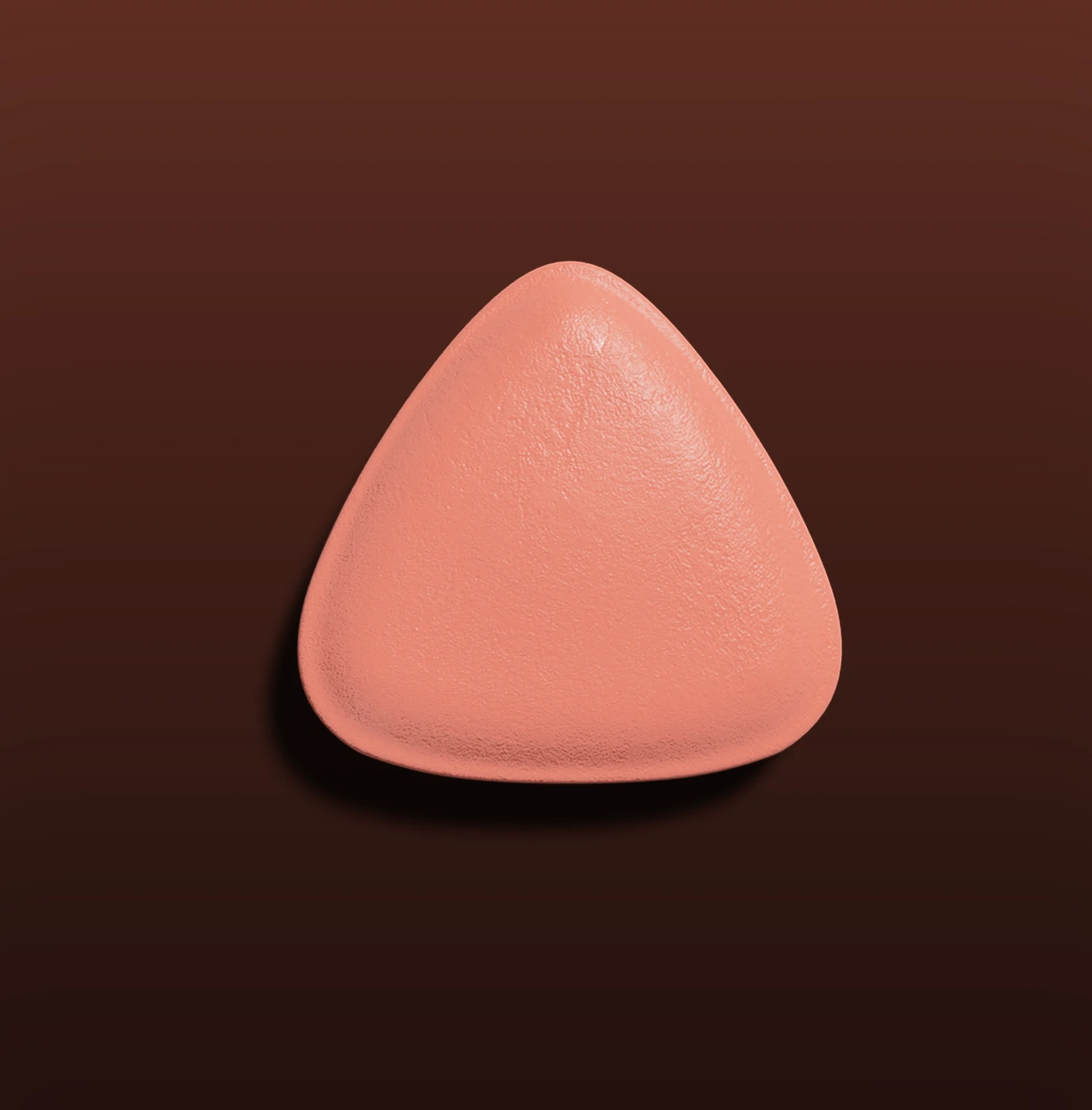Contents
Minoxidil has helped millions of men fight hair loss, but are all forms of minoxidil created equal? The answer may surprise you. Here’s what men really need to know before choosing a hair loss treatment.
What Is Minoxidil?
Minoxidil was originally developed as a blood pressure medication, but many patients started growing more hair because of taking it — and doctors took note. That “side effect” became a breakthrough in modern medicine for male pattern baldness.
Today, minoxidil is FDA-approved for topical use and frequently used off-label in oral form to regrow hair, prevent hair loss, and support follicle health in men with male pattern baldness. Countless clinical studies have proven its effectiveness, although the most significant difference is in the delivery.
How Does Minoxidil Work?
Minoxidil widens blood vessels and increases oxygen-rich blood flow to the scalp. This process stimulates dormant hair follicles to prolong the growth cycle, supporting sticker, stronger regrowth. While topical and oral minoxidil trigger the same biological process, they go about it in different ways and thus offer very different outcomes.
Key Differences Between Topical and Oral Minoxidil
Although oral and topical minoxidil are both designed to help men regrow hair, there are several key variants every man should know.
Application & Absorption
Men must apply topical minoxidil directly to the scalp for adequate absorption, often twice daily for optimal results. This form of minoxidil requires a significant time investment, unwavering consistency, and scalp access to work properly. In other words, men cannot miss days, can't wear hats, and must manage scalp residue, flaking, and styling issues.
Oral minoxidil is a simpler, more efficient alternative that offers similar results and different side effects. It is a once-daily pill taken at your convenience without abrupt lifestyle changes. Minoxidil pills deliver medicine directly to your bloodstream, which means no topical messiness or untreated follicles.
For busy men wanting to simplify their self-care routine, oral minoxidil may offer a convenient edge.
Effectiveness & Coverage
Topical minoxidil can sometimes underdeliver, especially when it comes to the hairline. This is because applications can be inconsistent and absorption can vary depending on several factors, including:
Drug concentration
Application frequency
Hair texture and length (curly, long, etc.)
Skin type
Scalp condition (oily, dry, etc.)
Missed spots
Low-dose oral minoxidil works systematically, which means it treats the entire scalp evenly from the crown to the hairline.
Side Effects & Safety
While topical minoxidil can cause dryness and flaking, skin irritation, itching, and allergic reactions, oral minoxidil comes with different considerations. At higher doses, the oral version was originally intended to treat hypertension, so systemic effects may be similar to blood pressure medications. However, lower doses of minoxidil are effective for treating hair loss and the side effect profile is much milder.
Common side effects of oral minoxidil include:
Nausea
Vomiting
Blushing
Bloating
Irregular heartbeat
Water retention
Many men tolerate oral minoxidil well when dosed appropriately and monitored by a licensed healthcare provider. The payoff is often rapid hair regrowth without the daily scalp battles.
Combination Formulas for Hair Regrowth
Here is where it gets interesting. While topical minoxidil works well on its own, oral minoxidil can be paired with other ingredients that support whole-body health and performance.
Take Grower, for example. It’s Rugiet’s once-daily treatment that combines customized doses of oral minoxidil and tadalafil for erectile dysfunction support. This dual-action medication for hair loss also treats ED by improving circulation from head to toe.
Simplify Your Hair Loss Routine
Topical minoxidil had its time, but today’s men want hair loss solutions that fit their lives. Oral minoxidil offers a no-fuss, full-coverage approach without greasy side effects, midday reapplications, or inconsistent results. And when paired with clinically backed ingredients like tadalafil, modern men can treat hair loss and ED at the same time.
Create a smarter, more efficient daily routine that supports confidence, circulation, and performance. Regrowing your hair shouldn’t feel like a second job. With Grower, it doesn’t have to.
SOURCES:
Suchonwanit, P., Thammarucha, S., & Leerunyakul, K. (2019). Minoxidil and its use in hair disorders: a review. Drug design, development and therapy, 13, 2777–2786. https://doi.org/10.2147/DDDT.S214907
Drug Approval Package: Men’s Rogaine (5% Minoxidil) NDA #021812. (2006, January). Www.accessdata.fda.gov. https://www.accessdata.fda.gov/drugsatfda_docs/nda/2006/021812s000TOC.cfm
Minoxidil (oral route). (2024). Mayo Clinic. https://www.mayoclinic.org/drugs-supplements/minoxidil-oral-route/description/drg-20068757
Olsen, E. A., Dunlap, F. E., Funicella, T., Koperski, J. A., Swinehart, J. M., Tschen, E. H., & Trancik, R. J. (2002). A randomized clinical trial of 5% topical minoxidil versus 2% topical minoxidil and placebo in the treatment of androgenetic alopecia in men. Journal of the American Academy of Dermatology, 47(3), 377–385. https://doi.org/10.1067/mjd.2002.124088
Rossi, A., Cantisani, C., Melis, L., Iorio, A., Scali, E., & Calvieri, S. (2012). Minoxidil use in dermatology, side effects and recent patents. Recent patents on inflammation & allergy drug discovery, 6(2), 130–136. https://doi.org/10.2174/187221312800166859
Knutsen, R. H., Beeman, S. C., Broekelmann, T. J., Liu, D., Tsang, K. M., Kovacs, A., Ye, L., Danback, J. R., Watson, A., Wardlaw, A., Wagenseil, J. E., Garbow, J. R., Shoykhet, M., & Kozel, B. A. (2018). Minoxidil improves vascular compliance, restores cerebral blood flow, and alters extracellular matrix gene expression in a model of chronic vascular stiffness. American journal of physiology. Heart and circulatory physiology, 315(1), H18–H32. https://doi.org/10.1152/ajpheart.00683.2017
Penha, M. A., Miot, H. A., Kasprzak, M., & Müller Ramos, P. (2024). Oral Minoxidil vs Topical Minoxidil for Male Androgenetic Alopecia: A Randomized Clinical Trial. JAMA dermatology, 160(6), 600–605. https://doi.org/10.1001/jamadermatol.2024.0284
https://www.facebook.com/Drugscom. (2024). Minoxidil: Uses, Dosage, Side Effects, Warnings. Drugs.com. https://www.drugs.com/minoxidil.html
MC. (2024, July 30). Minoxidil Oral. MedCentral; MC. https://www.medcentral.com/drugs/monograph/8680-382608/minoxidil-oral
Hussein, R. S., Salman Bin Dayel, Othman Abahussein, & Abeer Ali El‐Sherbiny. (2024). Applications and efficacy of minoxidil in dermatology. Skin Health and Disease, 4(6). https://doi.org/10.1002/ski2.472
Gupta, A. K., Talukder, M., Shemer, A., Piraccini, B. M., & Tosti, A. (2023). Low-Dose Oral Minoxidil for Alopecia: A Comprehensive Review. Skin appendage disorders, 9(6), 423–437. https://doi.org/10.1159/000531890
Chen, M., Weichert, M., Guo, W., Ruzic, R., & Briley, J. (2025). Low-dose oral minoxidil does not significantly affect blood pressure: A systematic review and meta-analysis. Journal of the American Academy of Dermatology, 92(3), 554–555. https://doi.org/10.1016/j.jaad.2024.10.057


